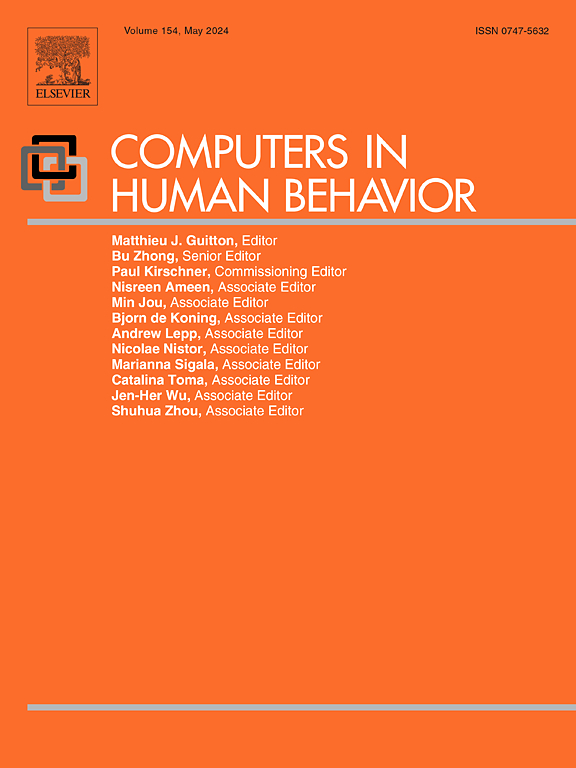Learning about abstract systems: Understanding children's journey in grasping internet principles across age groups in a mixed-methods experimental study
IF 9
1区 心理学
Q1 PSYCHOLOGY, EXPERIMENTAL
引用次数: 0
Abstract
Children frequently use the internet but often lack an understanding of its underlying principles. This contrast stems from the inconsistency between the internet's complex, invisible infrastructure and processes, and the familiar, user-friendly interfaces children interact with. This study investigates how children's knowledge of the internet evolves with age and whether targeted interventions can accelerate or alter this trajectory. We address four research questions: (1) How elaborate are children's preconceptions of the internet? (2) How much can instruction improve their understanding? (3) What forms of knowledge (everyday/scientific) are acquired through intervention? (4) Which incorrect ideas are resistant to change?
Using a convergent mixed-methods design, we examined 69 children across three age groups (Grades 4/5, 6/7, and 8/9; 9–15-year-olds) before and five months after a one-on-one, 45–60-min tutoring session. A no-intervention control group was included (n = 68).
Thematic and frequency analyses revealed: (i) fragmented initial understanding rooted in children's interactions with digital devices, consistent with previous studies; (ii) novel preconceptions, such as conceptualizing data storage in non-physical ways, e.g., “on a YouTube channel”; (iii) knowledge elevated due to instruction to a level comparable to that of peers two years older, aligning with how 9–15-year-olds spontaneously progress from intuitive understandings about visible aspects to more scientific comprehension of the internet's infrastructure; (iv) only modest resistance to change.
These promising findings suggest that interventions building scientific knowledge upon intuitive prior knowledge can effectively bridge the gap in understanding complex socio-technological systems like the internet, offering a blueprint for developing evidence-based curricula.
求助全文
约1分钟内获得全文
求助全文
来源期刊

Computers in Human Behavior
Multiple-
CiteScore
19.10
自引率
4.00%
发文量
381
审稿时长
40 days
期刊介绍:
Computers in Human Behavior is a scholarly journal that explores the psychological aspects of computer use. It covers original theoretical works, research reports, literature reviews, and software and book reviews. The journal examines both the use of computers in psychology, psychiatry, and related fields, and the psychological impact of computer use on individuals, groups, and society. Articles discuss topics such as professional practice, training, research, human development, learning, cognition, personality, and social interactions. It focuses on human interactions with computers, considering the computer as a medium through which human behaviors are shaped and expressed. Professionals interested in the psychological aspects of computer use will find this journal valuable, even with limited knowledge of computers.
 求助内容:
求助内容: 应助结果提醒方式:
应助结果提醒方式:


